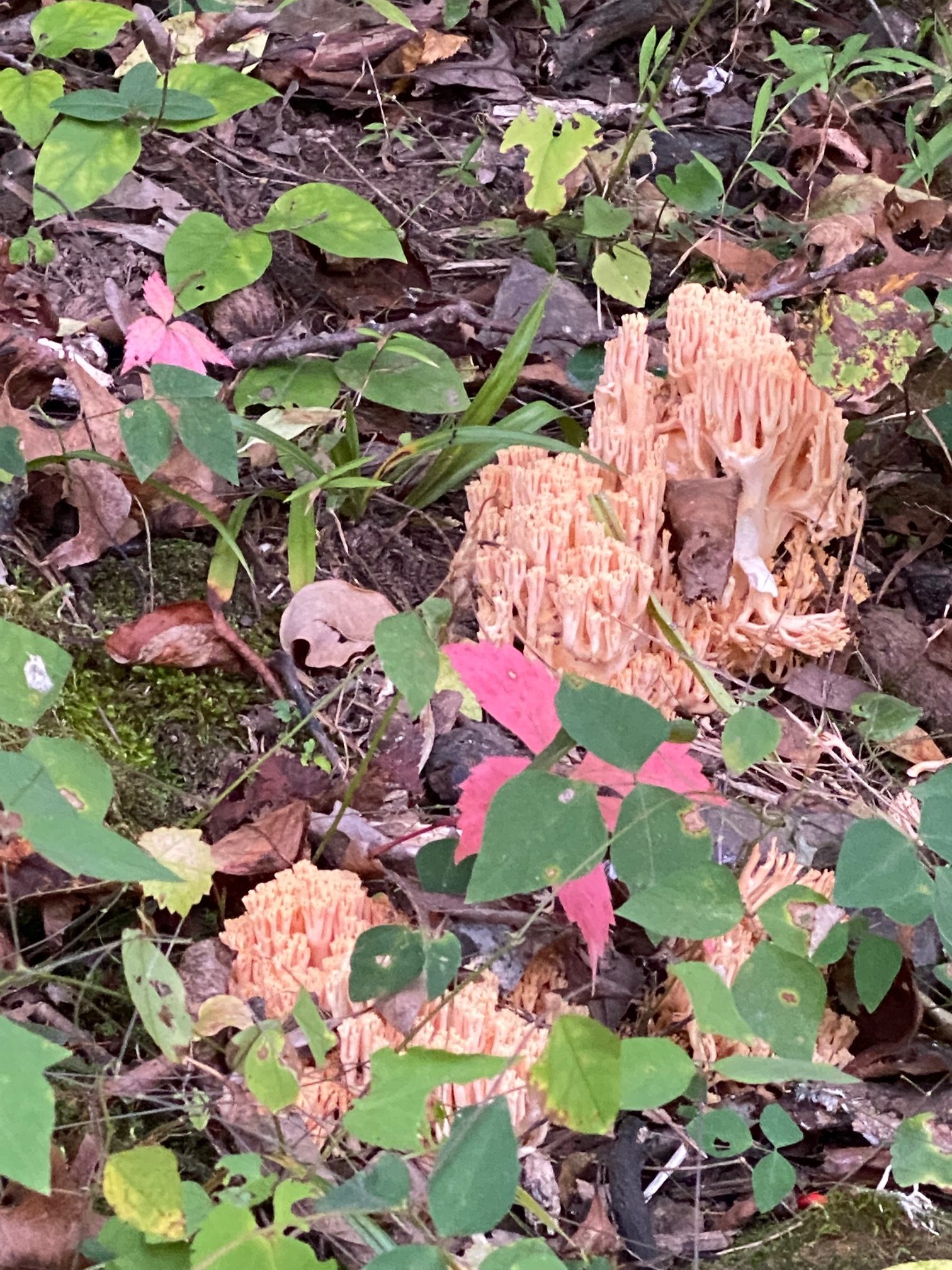Seaweed Mushrooms with red leaves for color – Photo: L. Weikel
Myriad of Mycelium
I’ve seen a lot of mushrooms in my day. Without even being the type of person who forages for them, I’ve randomly run across them simply in the course of all the walks I take. It doesn’t even matter whether I’m traipsing through fields, strolling through my yard, or hiking in the woods (where they arguable seem to be more prevalent). Even if I’m just walking along a road that abuts fields and forest, I’ve seen a myriad of mycelium.
But I have to admit, I saw one the other day during my circumambulations that I don’t recall ever seeing before. It caught my eye because it reminded me of a smaller version of sea sponges (or as we used to call them when we’d find them drying out on the sand as the high tide receded, ‘dead man’s fingers’).
These don’t actually look like dead man’s fingers, I suppose – real or emanating from the sea. But from my perspective, they seemed to have a similar consistency, albeit the ‘fingers’ were smaller and much thinner. As I mentioned, I don’t remember ever seeing a mushroom like this one before.

(Not even going to comment on the guy running through the mushroom patch…) Photo: L. Weikel
Possible Identification
I tried my hand at identification by accessing this site – the USDA Field Guide to Common Macrofungi in Eastern Forests and Their Ecosystem Functions. It’s not quite as easy to use as my Herp site (which I avail myself of often). And I’m not sure if I hit on the correct one. (I’m trusting some of you to enlighten me if I haven’t.)
It appears to me that my discovery is a Milk-White Toothed Polypore. If this is correct, it’s inedible. (Not that I was even remotely contemplating snacking on it.)
Wonderful Movie
All of this reminds me, of course, of the wonderful movie, Fantastic Fungi, which I wrote about in my post Magnificent Mycelium. I’m pretty sure it’s showing on Netflix now – so if you haven’t seen it yet, I heartily recommend it. You will come away from watching it with an utterly transformed appreciation for this creature with which we share our planet.

Photo: L. Weikel
(T-71)
